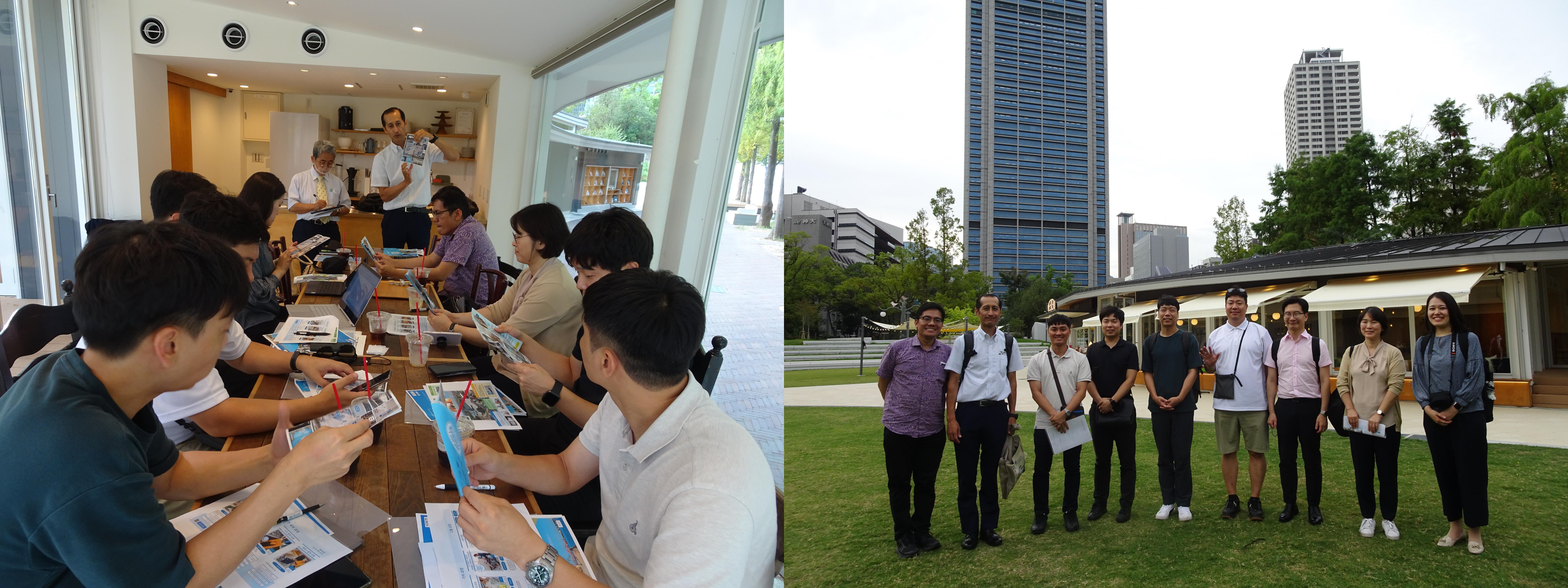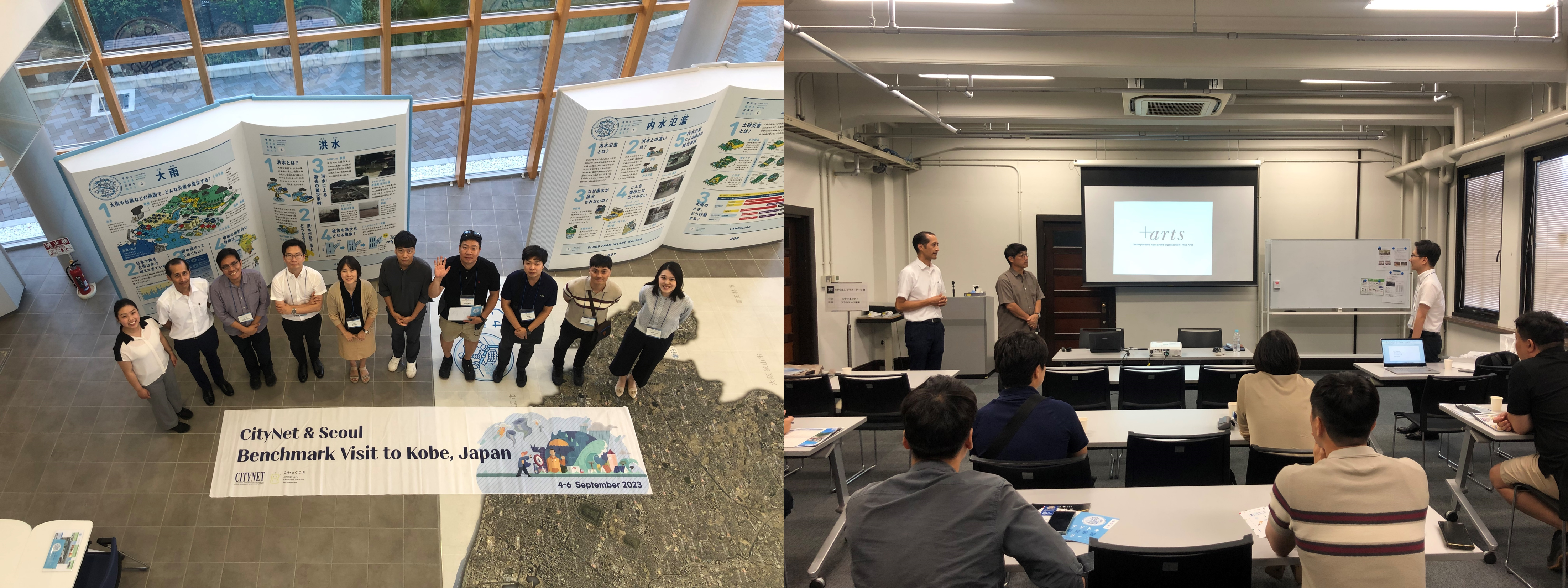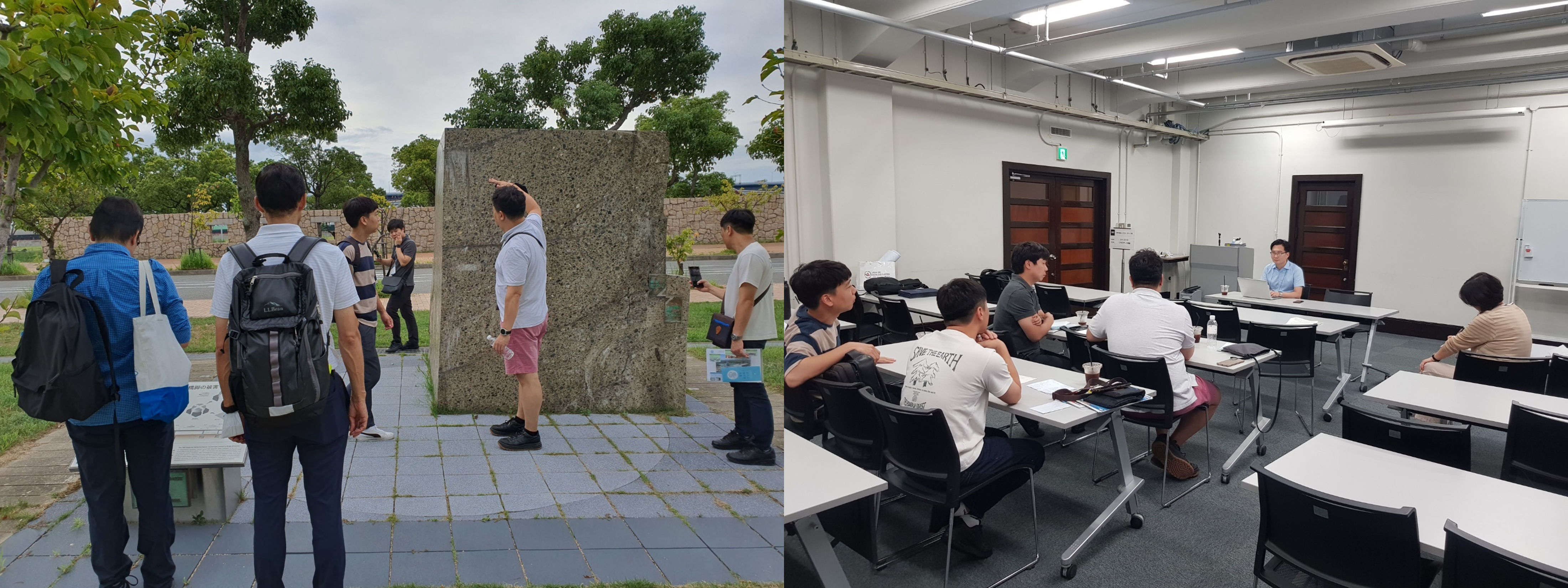CityNet Secretariat, in collaboration with CityNet – Plus Arts Center for Creative Partnerships, held Benchmarking Workshop on Disaster Management in Kobe, Japan from 4-6 September
The workshop was organised to foster learning and knowledge-sharing opportunities in disaster management between Korean and Japanese cities. Four officials and researchers in charge of disaster response system at Dobong-gu, Jongno-gu, Seoul Institute and Seoul Institute of Technology attended this workshop. Ms Akiko Yamakoshi, Director of Project Administration of CityNet Yokohama Project Office (CYO) was also welcomed as a participant.
The three-day workshop started with a briefing session in Higashi Yuenchi Park of Kobe. Mr Kendra Hirata, Executive Director of CityNet-Plus Arts Center for Creative Partnerships introduced the whole programme schedule for the participants, and presented Kobe City’s 2025 vision, which sets out the direction of Kobe’s urban development. Mr Hirata also explained Kobe City’s current disaster management policies, related laws and regulations in response to questions from the participants.
On the second day, participants visited Kobe City Hall Crisis Management Office. Kobe city officials briefed on how the city government responded to different types of disasters, and substantial commitments of civil society, local communities and school teachers to disaster preparedness. The participants also shared Seoul’s disaster-related systems and initiatives, including their similarities and differences with Kobe.
After the meeting, participants attended a study visit to Sakai City General Disaster Prevention Center, which opened last year with the aim to operate as a disaster education center for citizens. Participants had the opportunity to learn more practical lessons by experiencing earthquake and smoke/blackout after fire at the center’s activity facilities.
The study visit was followed by a meeting with Plus Arts NPO. Mr Hirokazu Nagata, Chair of Plus Arts gave a presentation on the foundation and history of the organisation. Moreover, he also introduced its unique disaster risk reduction education programmes targeting students and civilians in Japan, Nepal and the Philippines, which attracted a great interest among the participants.
On the third day, participants visited Disaster Reduction and Human Renovation Institution (DRI). Established in 2002, DRI has its goals to commemorate the Great Hanshin-Awaji Earthquake in 1995 and pass on the lessons of the disaster to the next generation. Programmes for the participants involved watching realistic videos and documentary films concerning the earthquake, and visiting exhibition rooms that shows earthquake-related materials and the Kobe’s reconstruction process.
At a wrap-up session, participants came up with and presented ideas for programs or activities to further develop Seoul’s disaster management capacity, based on lessons and outcomes from the workshop. They all agreed that even if Seoul had also established advanced disaster management systems, there was a significant gap in public awareness on disaster preparedness between Korea and Japan. Their suggestions, therefore, focused on the strategies of raising awareness of disaster management among Korean citizens.
Based upon the successful hosting of this workshop, CityNet expects further opportunities for city-to-city exchanges and cooperation between Korea and Japan.
This article has been written by Bohyun Kim, who can be reached at programs3@citynet-ap.org.





